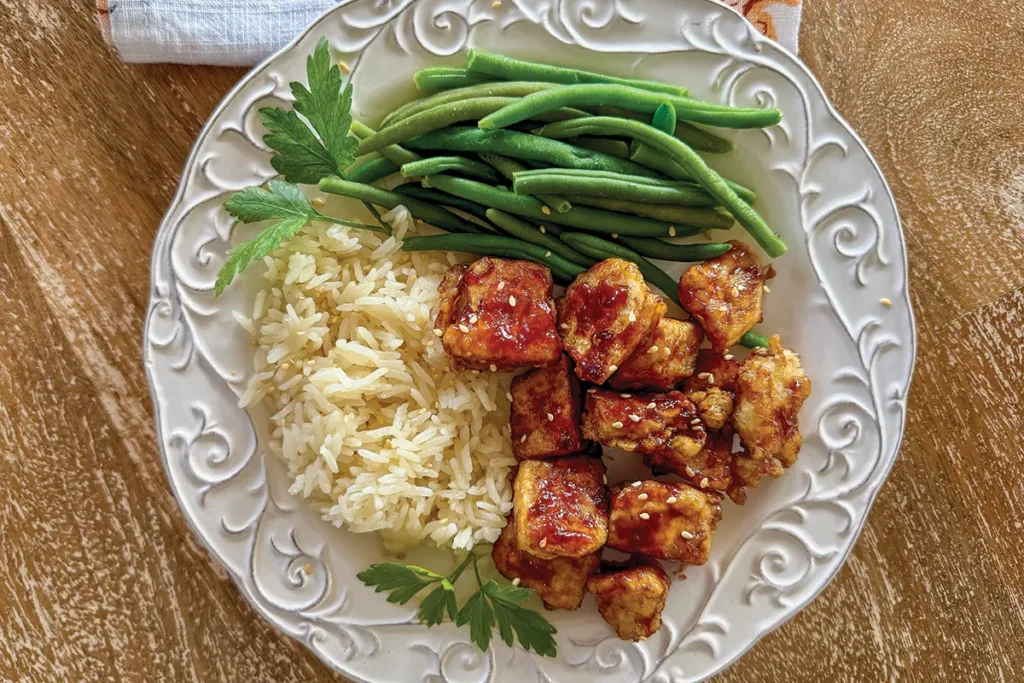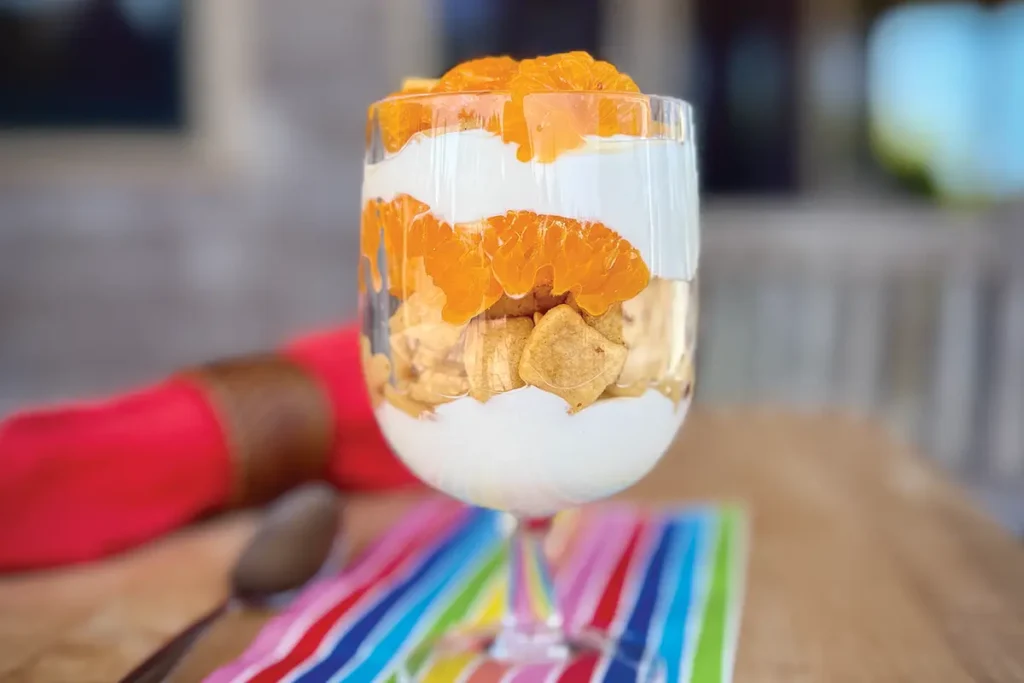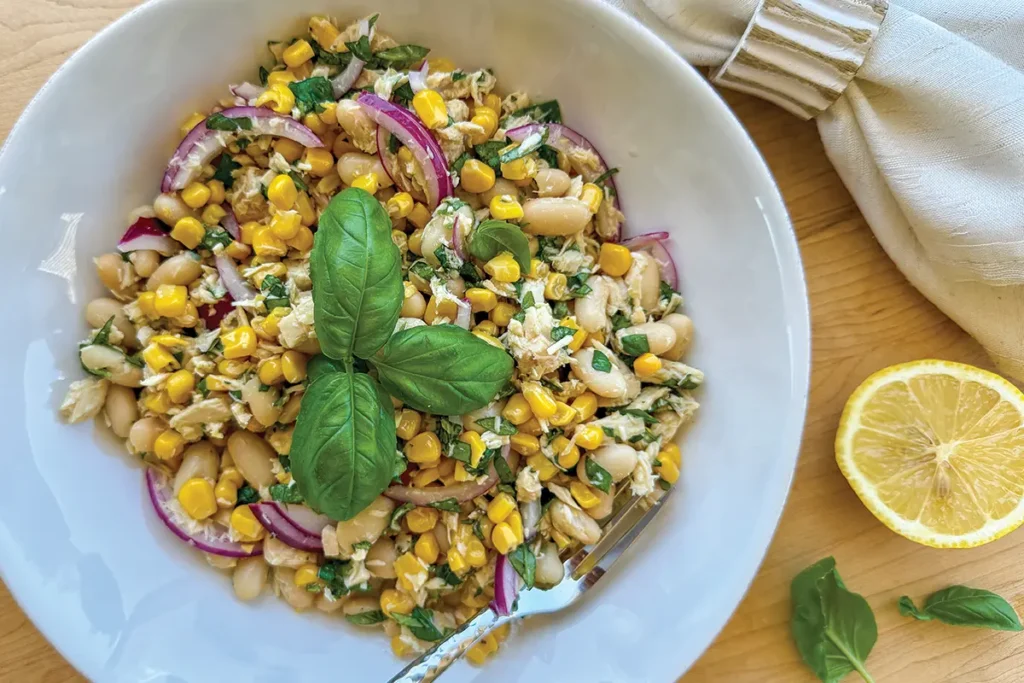Today’s Dietitian
Vol. 27 No. 8 P. 10
Deciding what to make for dinner or an afternoon snack can be a challenge at the best of times but toss confusion about processed and ultraprocessed foods into the mix, and the question of what to put on the dinner table or into a lunchbox can feel even more overwhelming. For patients and clients trying to eat healthfully, negative press about “processed” and “ultraprocessed” foods—from headlines to health apps—can lead to more questions than answers.
Much of this discourse stems from the growing influence of the NOVA classification system, a global framework that has shaped how researchers, public health officials, and increasingly, consumers, think about food processing.
Developed by researchers at the University of São Paulo in Brazil and introduced in 2009, NOVA was designed to investigate how different levels of processing relate to global trends in diet and health, including obesity, diabetes, and heart disease.1 NOVA (also written Nova) is not an acronym, but a name derived from the Latin word for “new,” chosen to signal a new way of looking at the food supply. According to the team at NUPENS (Núcleo de Pesquisas Epidemiológicas em Nutrição e Saúde), which developed the system, NOVA classifies foods by “the extent and purpose of food processing.”2
A Brief Overview of NOVA
NOVA organizes foods into the following four groups.2
Group 1
These include unprocessed or minimally processed foods such as fresh, frozen, or dried fruits and vegetables; whole grains; plain yogurt; milk; eggs; fresh or dried legumes; raw nuts; and fresh herbs. These foods may be washed, peeled, frozen, or vacuum packed, but have no added salt, sugar, oils, or other culinary ingredients.
Group 2
Here you’ll find processed culinary ingredients extracted from Group 1 foods or from nature, such as vegetable oils, butter, lard, sugar, salt, honey, and starches. These ingredients are typically used in home cooking or commercial food prep to season and cook foods but are not consumed on their own.
Group 3
These include processed foods made by adding ingredients like salt, oil, or sugar to Group 1 foods to enhance shelf life or sensory qualities. Examples include canned beans, canned fish, plain tofu made with added coagulants, cheese, nut butters made with just nuts and salt, jarred marinara sauce, some packaged whole grain breads, and plain yogurt with added fruit.
Group 4
Ultraprocessed foods (UPFs) land in this group, consisting of industrially formulated products containing ingredients not typically used in home kitchens, such as protein isolates, modified starches, hydrogenated oils, high fructose corn syrup, artificial sweeteners, emulsifiers, flavorings, or colorings. These foods often undergo multiple processing steps and are engineered for convenience and hyperpalatability. Examples include sweetened yogurt, snack chips, soft drinks, packaged snack cakes, frozen pizza, frozen entrées, protein bars, fortified breakfast cereals, and plant-based meat alternatives. Some seemingly wholesome items like flavored hummus and baby food pouches are also considered UPFs due to added emulsifiers, stabilizers, or other additives.2
Limitations of NOVA
While NOVA has been useful for population-level surveillance, it has notable limitations when applied in individual counseling. Critics argue that the system’s focus on processing level excludes nuance around nutrient density and fortification and that broad avoidance of UPFs could inadvertently restrict access to convenient, affordable, and nutrient-rich options.3,4 As a result, nutrient-dense foods like tofu, whole wheat bread, or fortified breakfast cereal can end up in the same category as sugary soft drinks. A 2024 Academy of Nutrition and Dietetics review emphasized that NOVA was never intended to guide diet counseling at the individual level.3
For patients and clients already puzzled by food choices, the terms “processed” and “ultraprocessed” may feel like an additional burden. Some may assume they refer only to sweet treats and snack chips, while others might worry that convenient pantry staples like canned beans, frozen entrées, or flavored yogurt are off limits. Dietitians can help reframe these assumptions by shifting the focus from classification to context.
Offering Practical Guidance
Instead of categorizing foods strictly by processing level, dietitians can encourage clients to consider what a food adds from a nutritional perspective and how it fits into meals and snacks they already enjoy. Fortified instant oatmeal with sliced banana and a tablespoon of peanut butter delivers fiber and healthy fats with minimal effort. Canned beef and barley soup paired with whole grain crackers and a packaged fruit cup on the side makes a nourishing, low-effort lunch. A veggie or plant-based burger topped with lettuce, tomato, and a favorite condiment, served on a whole grain bun, can be part of a nutrient-dense, plant-forward dinner.
Processed (Group 3) and ultraprocessed (Group 4) foods can enhance the quality of a meal when chosen thoughtfully. They can improve variety, shorten prep time, reduce food waste, and increase access to key nutrients—particularly for patients with limited time, culinary confidence, or fresh food availability. Encouraging clients to keep nutrient-dense processed items on hand such as canned tuna or sardines, canned vegetables, tofu, canned lentils, fortified soymilk, nut butters, hummus, and whole grain crackers can make home cooking more realistic and sustainable.
Dietitians can also help clients become more confident label readers by encouraging them to compare brands and choose options that align with their health goals. For example, when selecting vanilla or fruit-flavored yogurt, look for varieties with less added sugar. When choosing breakfast cereal, aim for the most fiber or protein per serving. And when buying jarred marinara sauce, compare labels to find the lower sodium option.
— Liz Weiss, MS, RDN, shares recipes and healthful living advice on LizsHealthyTable.com and her podcast, EAT, DRINK, LIVE LONGER. Weiss is a cooking instructor, frequent lifestyle guest on TV shows across the country, and a recipe developer and cookbook author.
Mix-and-Match Processed Meals and Snacks
Use these combos in client handouts, grocery store tours, or social media posts to show how processed and ultraprocessed foods can make healthy eating easier.
- Slurpable smoothie = plain soymilk + 100% orange juice + frozen berries
- Quick snack with fiber and protein = whole grain crackers + hummus
- Fast, filling pasta dinner = canned lentils + jarred marinara + pasta
- Mediterranean-inspired open-faced lunch = canned sardines + whole grain toast + sliced avocado
- Veggie-loaded upgrade = frozen cheese pizza + frozen spinach + frozen mushrooms
- Pantry burrito bowl = microwaveable brown rice + canned black beans + salsa + shredded cheese
- High-protein sweet snack = cottage cheese + canned peaches (in juice)
- High-protein grain bowl with crunch and flavor = prebaked tofu + microwaveable quinoa + bagged salad greens + bottled peanut dressing
- Easy meatless Monday dinner = plant-based burger + sliced tomato + whole grain bun
RECIPES FROM PANTRY TO PLATE
The following three recipes demonstrate how to build balanced meals using a mix of foods from all four NOVA categories, including both processed (Group 3) and ultraprocessed (Group 4). Each dish showcases how everything from fortified cereals and yogurt to tofu and canned tuna can be used in simple, nourishing, accessible ways. Designed with busy home cooks in mind, these examples provide practical ideas that dietitians can share with clients who want to eat well without cooking completely from scratch.
Tuna, Bean, and Corn Salad
This easy salad brings together the best of both worlds—pantry staples and vibrant fresh ingredients—for a simple dish that’s ready in minutes. Canned tuna, beans, and corn offer protein, fiber, and convenience, while lemon, red onion, and fresh basil add brightness and flavor.
Total Time: 30 minutes
Yield: 4 to 5 servings
Ingredients
Zest of half a lemon
4 T lemon juice
½ cup thinly sliced red onion
Two (5-oz) cans tuna in olive oil, drained and flaked
15-oz can cannellini beans, drained and rinsed
11-oz can corn kernels, drained
½ cup roughly chopped fresh basil
2 T extra virgin olive oil
Kosher salt and pepper
Directions
1. Place lemon zest in small bowl and set aside.
2. Place lemon juice and red onion in a separate bowl. Stir to combine and let sit for 15 to 30 minutes to mellow flavor.
3. In large bowl, combine tuna, beans, corn, basil, oil, lemon juice/red onion mixture, and lemon zest. Stir gently to combine. Season with salt and pepper to taste.
Nutrient Analysis per serving (1¼ cups)
Calories: 205; Total fat: 9.5 g; Sat fat: 1.3 g; Cholesterol: 18 mg; Sodium: 215 mg; Total carbohydrate: 15.5 g; Total sugars: 1.3 g; Added sugars: 0 g; Dietary fiber: 5.5 g; Protein: 13 g
— Source: Recipe and photo courtesy of Liz Weiss, MS, RDN
Crispy Tofu With Sweet Soy Glaze

Tofu may be classified as a Group 3 processed food under the NOVA system, but it provides valuable nutrients including plant protein, calcium, and isoflavones—compounds linked to heart, bone, and skin health. Boiling the tofu before cooking as called for in this recipe draws out moisture and firms up its texture, setting the stage for a crispy exterior and a soft, creamy center. Serve with rice and green beans or any other favorite vegetable.
Total Time: 30 minutes
Yield: 2 to 3 serving
Ingredients
For Tofu
16-oz container firm tofu
1 tsp salt
¼ cup cornstarch
2½ T canola or other neutral oil
For Glaze
3 T water
2 T low-sodium soy sauce
2 T maple syrup
1 T rice vinegar
1 tsp toasted sesame oil
1 small clove garlic, grated or minced
1 tsp grated fresh ginger
1 tsp cornstarch
Directions
1. Remove tofu from container and drain in colander. Break into 1- to 1½-inch irregular pieces. Fill medium saucepan with water. Add salt and bring to a boil. Carefully add tofu. Bring water back to a boil and gently boil for 5 minutes. Drain well and pat dry with paper towels.
2. Place tofu in large bowl and toss gently with cornstarch to coat. Heat large nonstick skillet over medium-high. Add oil and cook tofu 7 to 8 minutes, turning occasionally, until golden and crispy on all sides. Transfer to plate. Remove skillet from heat and cool for 2 to 3 minutes.
3. For glaze, place water, soy sauce, maple syrup, vinegar, sesame oil, garlic, ginger, and cornstarch in bowl. Whisk until well combined.
4. Place skillet over low heat. Add glaze mixture and cook, stirring often, until sauce simmers and thickens, 2 to 3 minutes. Add tofu back to skillet and toss to coat with glaze.
Nutrient Analysis per serving (6½-oz tofu + glaze)
Calories: 355; Total fat: 23 g; Sat fat: 2.4 g; Cholesterol: 0 mg; Sodium: 460 mg; Total carbohydrate: 24.5 g; Total sugars: 7.8 g; Added sugars: 7.8 g; Dietary fiber: 1.2 g; Protein: 14.5 g
— Source: Recipe and photo courtesy of Liz Weiss, MS, RDN
Mandarin Crunch Parfait

This simple snack layers three processed and ultraprocessed foods that pack a nutritious punch—offering protein and calcium from the yogurt, vitamin C from the fruit cup, and fiber plus key nutrients like B vitamins, iron, and zinc from the fortified breakfast cereal.
Total Time: 5 minutes
Yield: 1 serving
Ingredients
½ cup vanilla Greek yogurt
¼ cup plus 2 T fortified whole grain breakfast cereal
4.4-oz Mandarin oranges fruit bowl packed in juice, drained
Directions
1. Spoon ¼ cup yogurt into bottom of parfait glass or dish. Layer with ¼ cup cereal and half the mandarins. Top with remaining yogurt, mandarins, and cereal.
Nutrient Analysis per serving (1 parfait)
Calories: 225; Total fat: 0.2 g; Sat fat: 0 g; Cholesterol: 7 mg; Sodium: 140 mg; Total carbohydrate: 44 g; Total sugars: 28 g; Added sugars: 10 g; Dietary fiber: 2.5 g; Protein: 11 g
— Source: Recipe and photo courtesy of Liz Weiss, MS, RDN
References
1. Monteiro CA, Cannon G, Moubarac JC, Levy RB, Louzada MLC, Jaime PC. The UN Decade of Nutrition, the NOVA food classification and the trouble with ultra-processing. Public Health Nutr. 2018;21(1):5-17.
2. Monteiro CA, Levy RB, Claro RM, Castro IR, Cannon G. A new classification of foods based on the extent and purpose of their processing. Cad Saude Publica. 2010;26(11):2039-2049.
3. Examining the Nova food classification system and healthfulness of ultra processed foods. Academy of Nutrition and Dietetics website. https://www.eatrightpro.org/news-center/practice-trends/examining-the-nova-food-classification-system-and-healthfulness-of-ultra-processed-foods. Updated January 23, 2025. Accessed July 28, 2025.
4. Gibney MJ. Ultra-processed foods: definitions and policy issues. Curr Dev Nutr. 2018;3(2):nzy077.



